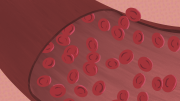In the same week the world witnessed two space mission failures, both of which had commercial origins: the Space Orbital Corporation’s Antares rocket failure and Virgin Galactic’s SpaceShipTwo crash. Space missions have always included a high level of risk, both financially and in respect to human life. For the burgeoning commercial space industry, such catastrophic failures serve as additional obstacles to an endeavour already rife with challenges.
Orbital Sciences Corporation signed the Commercial Resupply Services (CRS) contract with NASA in 2008 to provide eight resupply missions to the International Space Station (ISS). These missions involved launching the unmanned Cygnus cargo carrier aboard the Antares rocket to deliver supplies and payloads from the Mid-Atlantic Regional Spaceport (MARS) in Virgina, U.S.A.
The first of Orbital Sciences’ CRS launches occurred Jan. 9, 2014 and was followed by a second launch on July 13, 2014. Weather conditions postponed the second Cygnus launch by just over two months, but both missions successfully delivered cargo to the ISS. Last week’s launch would have been part of the third resupply mission carried out by the company.
Cygnus CRS Orb-3, the third of the Cygnus missions to the ISS, was scheduled to launch on Oct. 27, 2014 with 5,000 lbs of supplies, which included scientific payloads, hardware, and supplies for crew members. The launch was delayed for 24 hours after a sailboat was spotted too close to the launch pad inside the exclusion zone. Launching this vehicle would be Orbital Sciences’ Antares rocket, a two-stage launch vehicle which uses both liquid and solid fuel. Prior to launch there were no known issues with the rocket.
The failure occurred 15 seconds after lift-off at 6:22 p.m. EST when the Antares rocket stopped propelling and fell back to Earth, south of the launch pad. Fortunately, no fatalities occurred although the facilities were damaged and the rocket explosion resulted in over $200 million in losses.
Virgin Galactic is owned by Virgin Group Limited and was founded in 2004. The company has been developing plans for suborbital flights for space tourists and launching capabilities for science payloads and small satellites.
SpaceShipTwo is a suborbital plane designed to travel to sub-orbit after being launched by its mothership, WhiteKnightTwo. The spaceplane has a seating capacity of six passengers and two pilots. Each seat is currently being sold for US $250,000.
Just days after the crash of Cygnus CRS Orb-3 on Oct. 31, Virgin Galactic’s SpaceShipTwo crashed over the Mojave desert during a test flight with WhiteKnightTwo. The pilot of the ship managed to eject and survive with serious injuries. The co-pilot unfortunately did not survive.
Prior to the crash there had been discussion of the company beginning commercial sub-orbital space flights early in 2015.
Both the Antares rocket explosion and SpaceShipTwo crash are still under investigation, but the two events made last week difficult for the commercial space industry.
While it is easy to become discouraged and afraid, the space industry has always persevered in the name of science and exploration beyond Earth.
The commercial space industry is relatively new, but the private space industry has had significant failures in its past. Two important examples of such failures include NASA’s Space Shuttle Challenger disaster in 1986 and Space Shuttle Columbia in 2003.
In 1986 Space Shuttle Challenger launched on a mission to deploy the SPARTAN-203 tracking satellite and record lessons for the Teachers in Space program.
Seventy-three seconds after launch, the shuttle broke apart. The crew members did not survive.
Investigations revealed that primary and secondary o-ring seals on one of the solid rocket boosters failed due to below-threshold operating temperatures. This disaster resulted in a 32-month suspension of the space shuttle program.
In 2003, Space Shuttle Columbia returned from orbit after performing scientific missions.
Upon re-entry, a tile from the heat shield which had fallen off during launch led to the destruction of the left wing of the shuttle, destabilizing it and ultimately leading to its crash. None of the crew members survived.
The space shuttle program was then put on hold for another two years.
Both of these disasters resulted in NASA developing committees to oversee safety and inspection to prevent such catastrophes from occurring again.
Despite such disasters, the Space Shuttle Program lasted 30 years, retiring in 2011.
Over the program’s 30-year lifetime 180 payloads, which included satellites and parts for the ISS, were launched or delivered. Of the 135 flights, 133 were successful and 355 astronauts or cosmonaut passengers flew aboard one of the five shuttles.
Since then, many successes in space have occurred. Work on the ISS continued and was completed in 2011. The ISS represents worldwide collaboration in engineering and science, and has been inhabited continuously since 2000.
The science and technology developed as a result of the ISS has been beneficial here on Earth. An example is the neuroArm which performs surgery inside MRI machines. It uses robotic technology adopted from the Canadarm, Canadarm2, and Dextre.
SpaceX, a manufacturing and launching company, has also seen its own shares of failure and success. In August, one of SpaceX’s Falcon 9 prototypes self-destructed due to a faulty sensor.
Despite this failure, SpaceX has successfully completed 17 launches for both government and private missions. The company also has a contract with NASA to supply 12 of the Commercial Resupply Missions.
SpaceX is also currently developing the Dragon spacecraft that will serve to transport astronauts to and from the International Space Station.
Commercial space flight is important for the future of the world’s space programs. These commercial companies are enabling organizations like NASA to continue accessing space resources, such as launching capabilities for satellites or bringing crew members to the International Space Station.
While the Antares rocket explosion was unfortunate, and the SpaceShipTwo crash tragic, the commercial space industry should move forward and continue to enable mankind to explore and discover. Had we stopped after failures in the past, projects like the International Space Station may never have seen completion.



